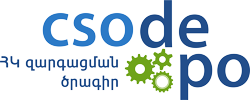
Կանայք կարող են խաղաղություն բերել Լեռնային Ղարաբաղին (անգլերեն)
Source: www.foreignpolicy.com
After decades of strife, leaders in Armenia and Azerbaijan in January announced in a joint statement that they are ready to “prepare the populations for peace.” The Organization for Security and Cooperation in Europe Minsk Group—the troika charged with mediating the conflict between the two over the Nagorno-Karabakh region—endures as one of the few remaining examples of U.S.-Russian cooperation. And in Armenia, a tiny, progressive opposition party recently rode a peaceful wave of popular discontent to a sweeping parliamentary victory last October.
Outside elite policy circles, though, Armenian and Azerbaijani societies remain as far apart as ever. In fact, they are diverging rapidly along ideological, cultural, and generational lines.
Women can help turn this tide.
Last month, Anna Hakobyan, Armenia’s new journalist-turned-first-spouse, touted a high-profile new public diplomacy effort, the “Women for Peace” initiative, in Washington, having launched the movement in Moscow last year. For inspiration, Hakobyan has reached back to Northern Ireland in the 1970s. There, with little formal effort to reconcile ordinary Protestants and Catholics, the shooting in Belfast of three children galvanized two women, Betty Williams and Mairead Corrigan, to spearhead a peace movement led by local mothers and women from across the political and religious divide. Their work built the foundations for the Northern Ireland peace process and for women’s peace movements around the world. In 1976, they earned the Nobel Peace Prize for their contributions.
That kind of peer-to-peer engagement is sorely lacking in Armenia and Azerbaijan. Although women’s rights advocacy groups are active in both countries, and in Nagorno-Karabakh itself, cross-conflict initiatives are small in number an lacking in funding, visibility, and political support. Women for Peace could help change all that.
In Armenia, women have started to show their power to make or break political campaigns. Largely left out from formal politics in the previous regime, women had mobilized in the country’s civil society. A Trojan horse against the regime, they ended up driving the Velvet Revolution in 2018.
During the Velvet Revolution in April of that year, the participation of women in large numbers helped keep the movement peaceful. Because it was peaceful, Armenians were comfortable coming out in large numbers. And because the revolution was so broad-based, the democracy it installed is more likely to last.
Yet even as Armenian politics has opened up, the absence of women from diplomatic efforts to resolve the conflict over Nagorno-Karabakh has persisted.
In part, that is because civilian efforts to bridge the divide have been lacking in general. Before the Velvet Revolution, the Armenian government was highly selective in its support of confidence-building measures as a way to maintain control over the peace process. And in Azerbaijan, people-to-people contacts were tightly controlled, with the space for civil society space shrinking since 2008. Azerbaijan has also viewed such initiatives with skepticism, believing that they will normalize the status quo, which tilts in Armenia’s favor. With neither country particularly interested in peace, diplomacy fell by the wayside.
But lately, with more international calls for confidence-building measures—and with a new government in Armenia—Baku and Yerevan have started to tentatively open up. As they do, women can emerge as natural leaders in peace-building initiatives. Evidence suggests that including women leads to better outcomes. The participation of civil society groups, including women’s organizations, makes peace agreements twice as likely to emerge and one-third more likely to last. Those signed by women delegates also include more provisions aimed at political reform and have higher rates of implementation for such provisions.
